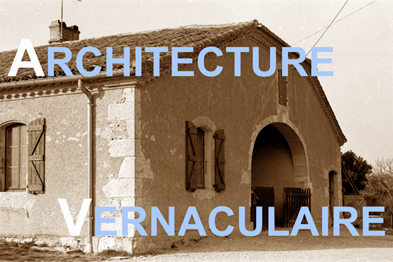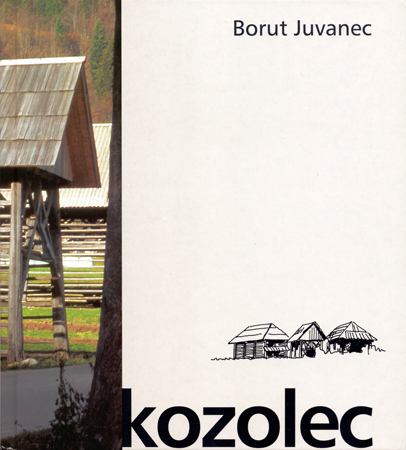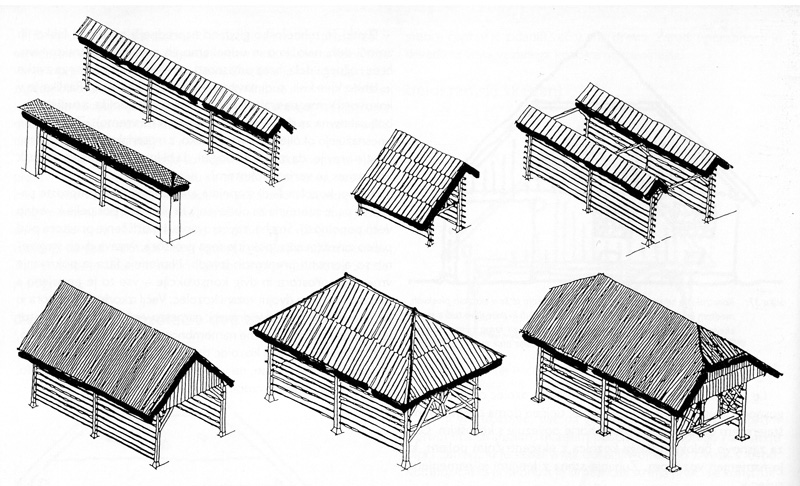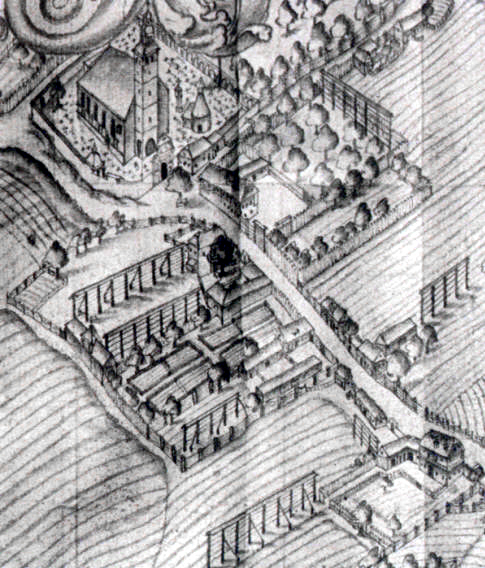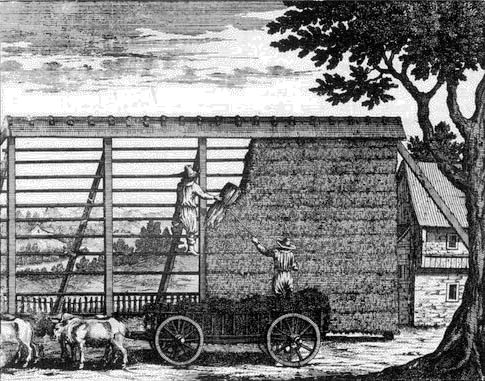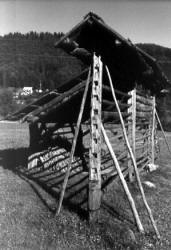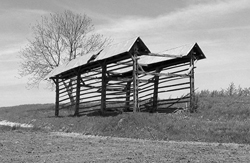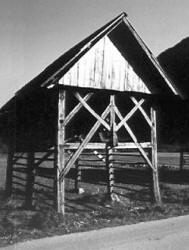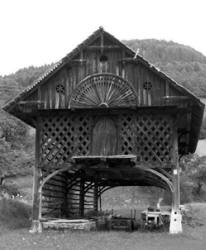COMPTE RENDU Borut Juvanec (Maj Juvanec pour les photographies), Kozolec, Ljubljana, Fakulteta za arhitekturo, 2007 French version Bilingual French-English version Professor Juavec, whose research on dry stone huts in Europe our readers are quite familiar with, has revisited his initial subject from the 1985-1995 decade: the structure formerly used for drying hay in Slovenia and going under the name of kozolec (pl. kozolci) in the country's language. Hence the title of his recently released book
As Slovene is not our forte, we will refrain from trying to give an actual review of the book. Instead, in order for our visitors to grasp the diversity of the devices and structures encountered, we include herewith drawings of the various types of kozolec still extant, from the single line of posts under a two-sided coping to the nave with a double line of posts under a hipped or half-hipped roof.
The single-row structure is already present in the second half of the 17th
century as evidenced by the astonishing print down below. The roofed structure
raised on a double row of posts is a more recent development originating in
the 19th century and lasting into the early 20th century. It belongs to the
larger family of raised granaries of the Alpine and Pyrenean regions.
Because of its universality, the kozolec – under
its various guises and names – is viewed by Slovenes as an icon of their nation
and country. Indeed, in its most advanced form, called the toplar, in
which the single row turns into a nave, the panel into a bay and the coping
into roofing, the kozolec harks back to a golden age of large cattle
farms whose production required a real barn and not just hayracks.
The toplar allowed drying, threshing, and storing of agricultural implements in its open ground section while produce was stored in the openwork upper section and in the loft. In its most impressive specimens, it reflects the economic wealth of its building owner. Borut Juvanec's new book contains a number of helpful abstracts in various European languages. Additional information on Slovenian hayracks can be found in the author's own Internet site dedicated to "Slovene Architecture" ( www.ijs.si/kozolci/).
Author's address : To print, use the landscape mode © CERAV To be referenced as: Christian Lassure page d'accueil sommaire architecture vernaculaire
|
